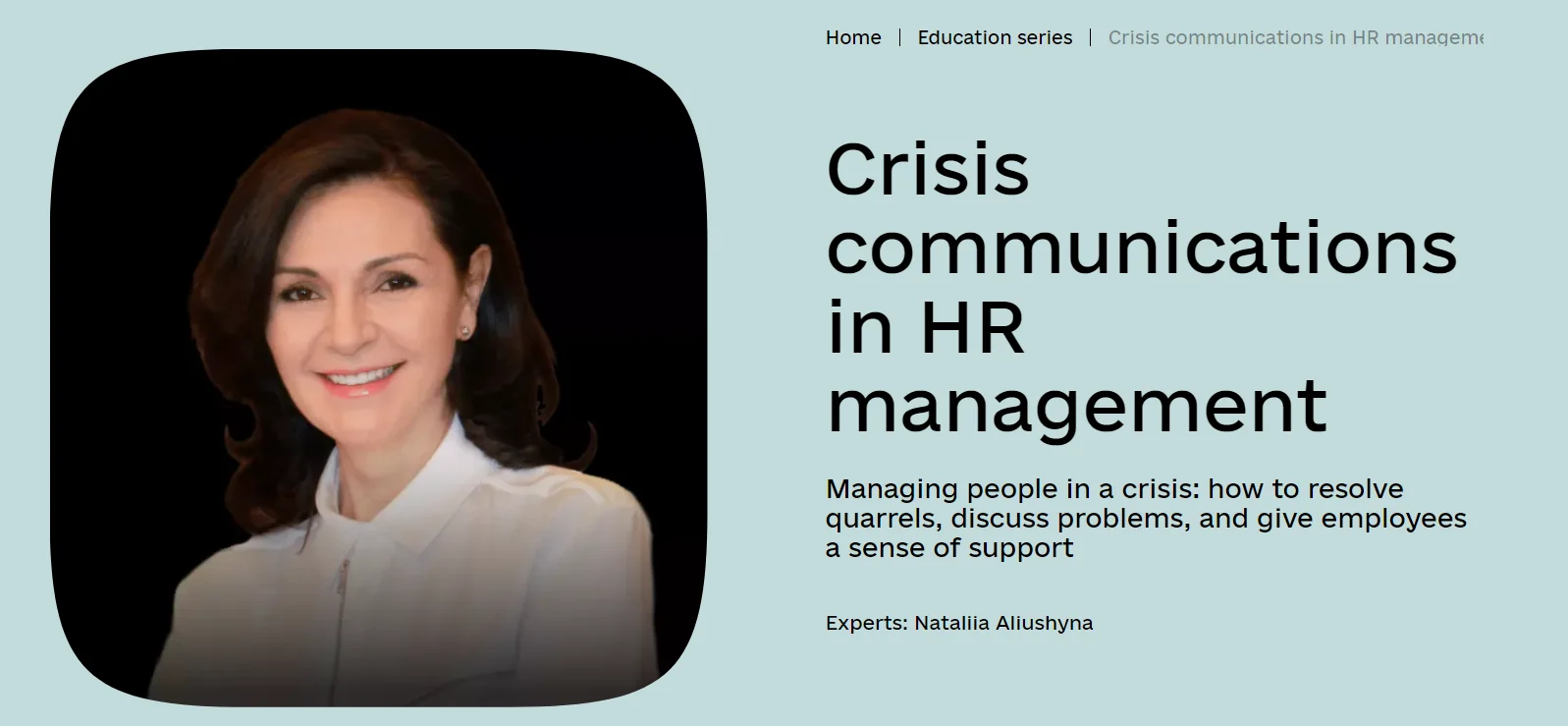
Today, fortunately, we live in democratic times when we can choose whom to work with. Therefore, the employer's green communication with performers is an important component of cooperation. Properly built interaction will not only help achieve a quality result but also form a long-term partnership in which all parties will feel comfortable. Conversely, communication mistakes, chaos in processes, and the inability to express concerns ecologically will lead performers to flee from such a customer in search of a better life.
Today, we will talk about green communication with performers, which will help stabilize processes and create a peaceful working atmosphere.
This article will be useful not only to customers working with freelancers (copywriters, designers, programmers) but also to managers of various levels who assign tasks and accept work from subordinates.
Common Mistakes of Customers When Working with Performers
In this chapter, we will discuss the most common mistakes of customers that complicate communication with performers. It is worth noting right away that the process of interaction in such a tandem is not easy, and one needs to learn the art of communication. These mistakes are often made by novice customers or lower-level managers who are just beginning to master the skills of managing people.
The inability to properly formulate a task or express concerns ecologically is not some terrible and incurable character trait — it is just like coding or designing. These mistakes just need to be identified and worked on correctly — and you will immediately see how communication and work results improve.

Unclear Brief as a Guarantee of Future Torment
Responsibility for the result lies not only with the person who performed the task but also with the one who set it. A properly formulated brief will prevent many sorrows for both the customer and the performer.
Here are some tips that will help you create an optimal brief and then evaluate work based on it:
-
The task should include measurable indicators — how much, what, when. The more specifics in the approved brief, the less chance the performer has of deviating from it and venturing into the turbulent seas of imagination.
-
The brief should not be long or short, but optimal — to provide the performer with enough information to understand the task, but not to confuse them even more. Practice shows that overly long and complex briefs are read inattentively or not read to the end. Accept this phenomenon like rain or winter; you can't do anything about it.
-
Ask the performer if they have any questions about the brief, encourage them to clarify or consult with you if something is unclear.
-
Everything that is not specified in the brief, the performer has the right to do at their discretion or not to do at all. Everything that is not in the brief is a field for speculation. Therefore, specify important points and be prepared for the fact that the performer may have a slightly different vision in terms of minor details than you do. This is normal.
-
References (examples) are the key to the performer understanding the task better. Show them several articles/websites/images that you like. You can also show anti-examples — this is what you shouldn't do. They say it's better to see something once than to hear about it a hundred times.
-
In case of unexpected results, it is important to distinguish whether it is the performer's mistake or if the customer is responsible for it — not specifying an important detail, not specifying a condition, the absence of which in the brief greatly affects its understanding. If the reason for the mistake lies in the brief, the performer has the right not to correct the work or to charge an additional fee for it. If the mistake is made by the performer, the customer has the right to demand that the errors be corrected within the scope of the paid order.
Read also: Website creation contract — how to protect yourself during development

What to Do If You Lack Competence
Not having competence is normal, which is why people turn to professionals. For example, a furniture repair master needs to order a website to attract more clients. Of course, he doesn't know the nuances of website development — how to choose the type of website and which CMS is needed, what web hosting is and how to register a domain, how much and what is needed for website maintenance in the future.
Freelancers are used to such situations and know how to provide the right advice, establish cooperation, and do everything to ensure that the client is satisfied, even if at the very beginning he didn't know what he needed.
But the customer can also simplify this interaction by putting in a little effort:
-
Take responsibility for choosing a freelancer and trust them. Read reviews, ask acquaintances, look at portfolios, spend enough time to find a person or agency you can trust with the work. It is worst for both sides when a customer does not understand the processes but tries to control them. A good performer usually has a rich portfolio, positive reviews, showcases their achievements on social media, takes pride in their work, and does not set too low a price for it. Once you have found a professional, you will have to let go of control and trust their advice.
-
Sometimes it is worth understanding the work process you are planning to order. Firstly, this will protect you from scammers and shoddy work, and secondly, it will protect you from situations where the performer is asked to do something strange or unrealistic. Google, YouTube, and acquaintances who have already done this can help with this. At least reading something before starting work will help avoid misunderstandings. For example, you can learn about the types of websites and choose the one that best suits your needs. Sometimes, before placing an order, consultations with specialists who will help you understand what you really need are paid for. And the larger the project, the more time theoretical preparation can take.
On this topic, I immediately remember the video about the seven red lines with green and transparent colors. Perhaps you have already seen it, as it is a classic, but let's watch it again.
Imagery and Metaphor Instead of Specifics
This design exudes loneliness... Make it... well, like everything in his life has fallen into place and everyone loves him.
So, what's not clear here?
It often happens that the customer does not fully understand what they want to change and what specifically they do not like. Or they understand but cannot express it. Recognizing what is "wrong" and being able to explain it is also a separate skill that needs to be developed.
This "wrong" is always hidden in the details, and it is necessary to determine which specific details, colors, arrangement of elements, and other components create such an impression. Of course, if the customer and the performer have found a common language at the briefing stage, there will be fewer such moments in the revisions, but they still occur.
And if you need to point out mistakes, it's better to do it not abstractly, but in specific, measurable terms. Here's how you can rephrase your impressions:
-
This website feels like it's from the 90s — lots of elements and small images, little space, outdated font.
-
It all looks harsh here — lots of dark colors, straight lines, sharp angles.
-
It looks like a child's design — lots of different bright colors, childish elements like butterflies or flowers, a complex font with flourishes.
Read also: Top 10 Ukrainian YouTube channels about IT
Voice Messages and Calls
Apparently, freelancers reading this section are praying for it to be read by customers as well. Editing voice messages is one of the biggest pains that performers have to deal with. In most cases, calls and voice messages are not comfortable for work.
There are several reasons why this format is better not to use:
-
Information is perceived worse by ear, so there is an increased likelihood that you will be misunderstood.
-
When a person writes a message or an email, they can reread it and see if something is ambiguous, vague, or unclear. This allows them to correct the text and send clearer instructions. In the case of oral speech, a person does not always realize that their words can be interpreted completely differently from what they meant.
-
If we are talking about phone calls, it is difficult to track afterwards what the agreement was and what was promised to whom.
-
When a person receives a voice message, they cannot always listen to it calmly, which can delay the response. A message, on the other hand, can be read in the metro or in a noisy room. And even if there is very little time, you can glance at the message and understand how urgently a response is needed, whether the matter can wait.
In short, communicating by voice creates even more reasons for misunderstandings and complications, of which there are already enough in any communication between people.
Communication by voice during an order can only be done if the performer agrees to it and finds this format comfortable.
In the question of the format of interaction, it is also important how the work will be submitted and how the acceptance process will take place. This needs to be discussed in advance. How will the performer send files, where and how will edits be discussed, what will be considered as work submitted. Some people find it convenient to work on Google Drive, others prefer email, and still others prefer Telegram.
Drama, Emotions, and Toxic Comments
It's understood that politeness and respect are important for collaboration. However, there are still customers who turn the process of making edits into a stream of emotions.
In reality, not everyone knows how to make remarks and point out flaws in work — this skill also needs to be developed. The moment when you need to point out mistakes can be emotionally uncomfortable for the customer themselves, which sometimes leads to excessive excitement and emotional comments. Partly, this is due to our communication culture, in which most people do not know how to say "no" and express denial in an assertive manner. The problem may also lie in toxic criticism that we received in childhood from elders (relatives or teachers), and in the fact that no one taught us how to assertively defend our boundaries.
If the process of expressing remarks is difficult and causes nervousness, it is a problem from the psychology realm. In such cases, it is advisable to read relevant literature or consult a psychologist. It is also necessary to understand which triggers are activated when there is a need to leave a disapproving comment or even refuse to accept work due to its low quality.
It's important to know that refusals, remarks, and denials can and should be expressed with respect, politeness, friendliness, and without unnecessary emotions.
Summarizing the above, the most important aspects of communication that significantly influence the interaction between a customer and an executor (manager and subordinate) are:
-
Adequate requirements that match the executor's competencies.
-
A clearly defined task specification that minimizes misunderstandings during the work process.
-
A communication format that is properly structured and comfortable for both parties, including the submission and acceptance of work.
-
Respect and politeness as a guarantee of comfortable cooperation for both sides.
-
Trust in the executor's experience.
-
Mutual responsibility for the work process, as task setting affects it as much as task execution.
Read also: How to master delegation and stop doing everything yourself
Collection of Useful Materials for Managers and Clients
As we have already mentioned, communication with subordinates and performers is a separate skill that needs to be developed, including a theoretical basis. To improve this skill, you can watch video lectures, enroll in courses, or read books. Here are some useful materials that will help improve your ability to manage people.
Courses on People Management
There are plenty of courses online that can help improve your communication skills with people, as well as your skills in personnel and project management. Some of them cost money, but there are also free ones that are suitable for novice entrepreneurs and small business owners. Here are a few courses that were relevant at the time of writing this article — most of them are free.
-
"Management of People and Projects" course from the "Educational Hub of Kyiv" (free). By completing 6 modules, you will learn about basic management skills. The course is designed for novice managers.
-
Educational series from "Diia. Education" — "Crisis communications in HR management". Five short videos will tell you about managing people in a crisis: how to resolve conflicts, discuss problems, and make employees feel supported.

-
Course "Project Management" from the "Open University of Maidan" (free). This course consists of 16 lectures by Sergey Gvozdev, a business professor at the Kyiv School of Economics. While the course primarily focuses on projects, it also includes lectures on personnel management.
-
"Point of Care: an online course on psychological support for teams and businesses" from the Ukrainian online education studio EdEra (free). Three modules cover psychological aspects of team communication, particularly dealing with stress during wartime.
-
"Fundamentals of Team and Project Management in IT. Preparatory" from the educational platform Prometheus (free). In 15 lectures, you'll find useful tips on working with teams — motivation, stress resistance, emotional intelligence, communication in conflicts, and much more.
-
"Internal Communications" — a course that teaches how to build transparent internal communication in a company and create your own story. Organizer: the online institute of free education Projector. It is most useful for managers who work not with scattered performers but build a permanent team. Starting in the fall of 2024.
-
"School of Communications" platform — here you will find many different courses and webinars dedicated to the communication of a leader with subordinates.
Books for Developing People Skills
-
Gary Chapman and Paul White — "The 5 Languages of Appreciation in the Workplace".
-
Jason Fried and David Heinemeier Hansson — "Rework: Change The Way You Work Forever".
-
Annie McKee, Richard Boyatzis, and Daniel Goleman — "Becoming a Resonant Leader: Develop Your Emotional Intelligence, Renew Your Relationships, Sustain Your Effectiveness".
-
Patrick Lencioni — "The Five Dysfunctions of a Team".
-
Peter Drucker — "The Effective Executive".
-
Ray Dalio — "Principles: Life and Work".
-
Stanley McChrystal, Tantum Collins, David Silverman, and Chris Fussell — "Team of Teams: New Rules of Engagement for a Complex World".
-
Stephen Covey — "The 7 Habits of Highly Effective People".
-
Frans de Waal — "The Bonobo and the Atheist: In Search of Humanism Among the Primates".
-
Jurgen Appelo — "Management 3.0: Leading Agile Developers, Developing Agile Leaders".
Here are some courses and books, but we understand that there is actually much more information to help those who constantly work with people. You can find plenty of materials yourself — YouTube channels, articles on the Internet, books, and webinars — that will help improve communication and management skills.
Being a client is a specialty that needs to be learned and experienced, so that communication with contractors is mutually enjoyable and effective.







